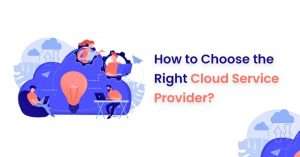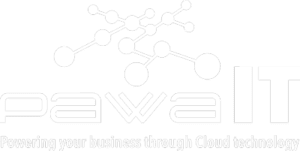Finding the Right Cloud Provider
Introduction
COVID-19 pandemic prompted businesses to adopt technology for continuity and competitiveness, with cloud computing gaining traction for minimal disruptions. More so, as organizations have their IT systems externalized, finding the right cloud provider is proving to be a mandatory factor that can have long-term consequences on a business’s success, in light of the statement, “A cloud service provider can either make or break a business.”
Finding the right cloud provider appears as a simple and uncomplicated procedure at first glance. More so, cloud providers vary significantly, offering different support, maintenance, and cost transparency options for businesses.
Assess your Business Requirements
Before finding the right cloud provider, a business needs to first define and outline the specific needs and requirements that moving to a cloud platform will meet and satisfy. These include the following considerations:
- Security and Compliance
In today’s standard, data is one of the most valuable asset owned by a business. As a result, data breaches have become commonplace, with disastrous consequences. Similarly, when finding the right cloud provider that implements industry-standard security measures, such as encryption and multi-factor authentication to ensure the safety of their data. However, a business can have a specific security need that is not supported by one cloud platform but provided by another.
Additionally, businesses must adhere to industry-specific regulations like HIPAA, GDPR, and PCI-DSS, with cloud platforms having different certifications.
- Scalability and Flexibility
When finding the right cloud provider, scalability and network availability are crucial for businesses’ cloud environments.
Flexibility is crucial for businesses to adapt their cloud environment to operations and workflows. More so, platforms like GCP, AWS, Azure, IBM, as well as Oracle offer customization options to align with business requirements.
- Contracts and Service-Level Agreements (SLA)
Contracts establish clear relationships between cloud providers and businesses as well as ensure transparent data security agreements for sensitive information.
SLAs guarantee business service levels, including uptime, performance, and response time, from cloud providers. Businesses should evaluate and choose the best SLA for their needs.
- Data Governance and Information Security
Business must consider regulatory and data privacy rules, data location, and local laws when selecting a cloud provider. Cloud platforms must encrypt data in transit and rest to protect privacy and prevent unapproved administrator access.
Businesses should understand the cloud platform’s data loss and breach notification processes and ensure they align with their risk appetite, legal and regulatory obligations, and operations.
It is integral to assess the cloud provider’s data and system security maturity, resilient, risk-based controls, auditable user access, and clear security roles and responsibilities in contracts. If the cloud provider possesses recognized certifications such as ISO 27000 series, businesses should check if they are valid while getting assurance of resource allocation, such as budget and headcount to maintain compliance with these frameworks.
- Cost
A business should consider the TCO ( Total Cost of Ownership), the sum of all the direct and indirect costs of using a cloud provider. Direct costs include subscription, setup, usage fees; indirect costs include training, migration, and integration, impacting cloud provider selection.
A business needs to select a cloud provider who is transparent about its pricing and billing models to help businesses calculate the TCO correctly. Moreover, the provider should provide tools and resources to help businesses optimize their costs
- Support and Maintenance
A business should choose a cloud provider with responsive support, available channels, and uptime guarantees. Different providers have different support and maintenance contracts, so businesses should compare and choose the suitable provider based on their needs.
- Performance and Reliability
Businesses should aim to choose a cloud provider that offers high-performance servers and reliable uptime. It is advisable to look for cloud providers with multiple data centers, redundant network connections, and reliable hardware.
How Does Google Cloud Platform (GCP) meet these Requirements?
- Security and Compliance
- Google Cloud prioritizes security with a resilient, multi-layered approach as well as encryption for guaranteed data protection.
- Google Cloud’s IAM controls user access and permissions through “least privilege” policies, ensures users only access the resources they need.
- Google Cloud meets industry-wide compliance certifications for businesses such as ISO 27001, SOC 2, HIPAA, and GDPR enhancing business compliance.
- Identity-Aware Proxy (IAP) is a feature provisioned by Google Cloud that controls access to applications by verifying a user’s identity before granting access.
- Cloud Data Loss Prevention (DLP) is a fully managed service designed to help classify, discover, and protect sensitive data.
2. Scalability and Flexibility
- Google Kubernetes Engine (GKE) enables the deployment and management of containerized applications enhancing additional layer of flexibility for workloads.
- Compute Engine allows the creation and management of VM instances on demand which provides the flexibility of customizing virtual machines configurations
3. Contracts and Service-Level Agreements
Google Cloud offers Service Level Agreements (SLAs) for various services, ensuring high availability, uptime with monthly uptime percentages exceeding 99%.
4. Data Governance and Information Security
- Google Cloud Data Catalog aids businesses in data discovery, classification, and organization. Businesses maintain control and visibility over its data assets.
- Data Loss Prevention (DLP) helps a business to discover and protect its sensitive data, by using advanced ML (Machine Learning) algorithms in identifying and securing sensitive data, hence maintaining compliance with data protection regulations.
- Google Cloud’s Security Command Center helps in provisioning insights into security threats, vulnerabilities, and risks across Google Cloud services, which allows businesses to implement suitable security measures.
5. Cost
- Google Cloud offers pricing models for businesses as well as the Free Tier Option for those not yet ready to fully migrate to cloud.
- When the business is ready to use the cloud platform, 2 options are available: A long-term plan & Pay-as-you-go pricing model. A long-term plan allows the business to make an extended-period upfront commitment by offering long-term pricing terms with upfront obligations of one up to three years. Compared to the Pay-as-you-go pricing model, businesses can achieve greater savings by committing to as much as 70%.
- If a business plans to use the cloud plan intermittently, the Pay-as-you-go on-demand pricing model will work best as services removed and added on demand. However, this degree of flexibility comes with a steep cost which makes it expensive per hou
6. Support and Maintenance
- Google Cloud provides various customer care support levels, including Basic Support for billing-related issues and Standard Support for small and medium businesses with minimal production workloads. Both levels offer unlimited technical support and resolution of issues.
- Enhanced Support offers unlimited 1:1 technical assistance for billing, outage, product usage, and features, suitable for medium and large businesses. Premium Support, offered to Enterprise level businesses, provides a dedicated technical account manager for workload performance, optimization, and health.
- Google Cloud’s Operations Suite provides integrated monitoring, logging, and diagnostics tools for effectively carrying out maintenance and troubleshooting. This can help businesses identify and resolve issues while ensuring high availability and reliability
7. Performance and Reliability
- Google Cloud’s global data centers ensure data availability on demand, ensuring redundancy and multiple copies of resources for businesses.
- Google Cloud SQL utilizes Failover Clustering Technology to reduce downtime ensuring seamless network connections without network changes or data loss.
- Google Cloud Platform uses load balancing to distribute traffic across multiple instances of a business’s application. As a result, this improves the application’s performance and responsiveness by managing operational overhead and reduces the risk of having a non-functional, slow, or overburdened application. GCP offers different types of load balancing, namely; Global Load Balancing (GLB), Regional Load Balancing (RLB), External Load Balancing (ILB), TCP/SSL Load Balancing, and TCP Proxy Load Balancing.
Conclusion
Finding the right cloud provider for your business requires careful consideration and assessment of a variety of factors. Even more, businesses should ensure they gain a thorough understanding of their specific requirements, evaluate service offerings, and consider factors such as scalability, cost, support, and security towards proper decision-making. Every business has unique requirements, and as a result, one cloud platform may work for one business and not be ideal for another. Time should be taken to analyze needs as well as compare different cloud providers to ensure efficient migration to a cloud platform.








